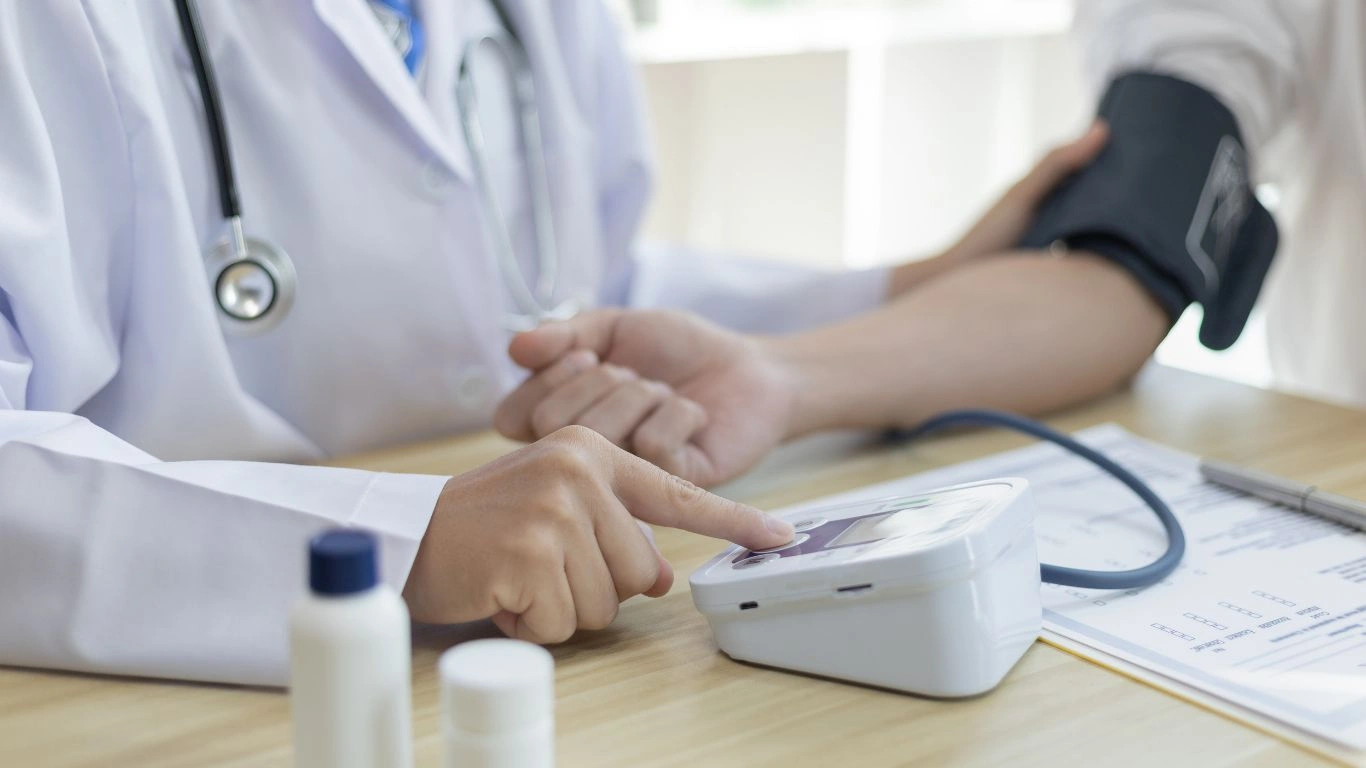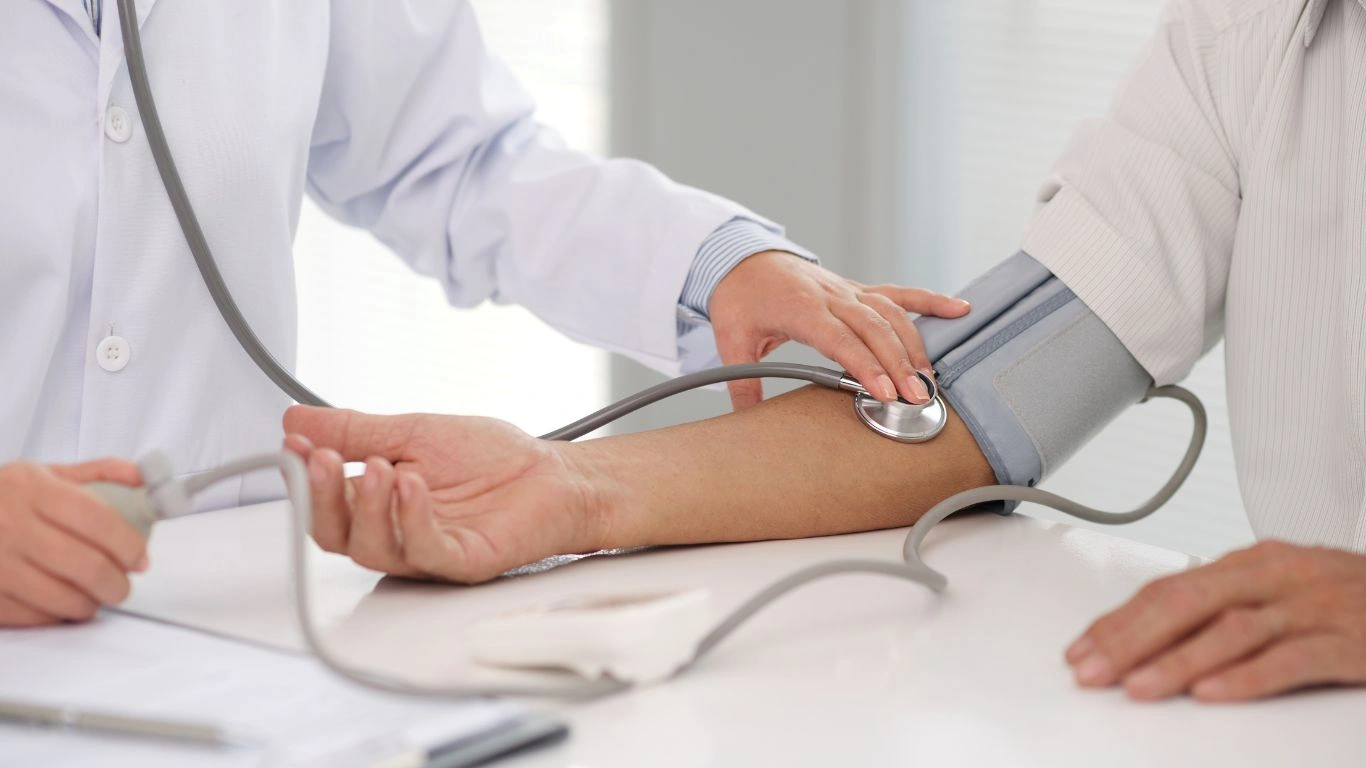Best Seafood Choices for Hypertension Diets to Lower Blood Pressure
As a seasoned Internal Medicine Physician with a specialty in Hypertension Management, I’ve witnessed firsthand the immense benefits of dietary changes when it comes to managing high blood pressure. One of the most powerful yet underrated strategies for controlling hypertension is choosing the right types of food, and today, we’re going to talk about one of the best choices you can make—seafood. If you’re dealing with hypertension, or simply want to lower your risk, selecting the best seafood choices for hypertension diets can make a world of difference.
Why Seafood is Beneficial for Hypertension
When it comes to controlling high blood pressure, there are numerous dietary adjustments that can help. Among the most effective, however, is increasing your intake of certain types of seafood. As someone who has worked with countless patients, I always find myself recommending seafood as part of a balanced hypertension-friendly diet. Not only is it a lean source of protein, but seafood is packed with essential nutrients like omega-3 fatty acids, potassium, and magnesium—key players in managing blood pressure.

Omega-3 fatty acids, in particular, are critical when it comes to reducing inflammation and improving cardiovascular health. Studies have shown that regularly consuming omega-3-rich seafood can lower both systolic and diastolic blood pressure. These fats have anti-inflammatory properties that help to relax and widen blood vessels, improving blood flow and reducing the strain on your heart. And we all know how crucial that is for managing hypertension!
The Key Nutrients Found in Seafood
It’s not just omega-3s that make seafood such a valuable addition to a hypertension-friendly diet. Let’s break down some of the key nutrients you’ll find in the best seafood choices for hypertension diets:
- Omega-3 Fatty Acids: These healthy fats help reduce blood pressure and improve heart function.
- Potassium: Helps balance the negative effects of sodium in your diet, which can raise blood pressure.
- Magnesium: This mineral helps relax blood vessels and regulate blood pressure.
- Vitamin D: Supports overall heart health and helps with blood vessel function.
- Lean Protein: Provides the body with the building blocks it needs without contributing to unhealthy fats that can increase blood pressure.
These nutrients work synergistically to support your cardiovascular system, ensuring that your body is better equipped to manage blood pressure effectively. But as with any dietary choice, the key is to focus on the right types of seafood.
Best Seafood Choices for Hypertension Diets
Now that we know the benefits of seafood for managing hypertension, let’s dive into the best options you should consider adding to your plate. Keep in mind that not all seafood is created equal when it comes to hypertension. Some varieties are packed with sodium, unhealthy fats, and calories, which can actually worsen high blood pressure. So, you’ll want to choose wisely. Below, I’ll highlight some of my personal favorites that are not only delicious but also incredibly heart-healthy.

Fatty Fish: A Heart-Healthy Powerhouse
When I recommend seafood to my patients with hypertension, one of the first types I mention is fatty fish. These fish are rich in omega-3 fatty acids, which, as we’ve discussed, can help lower blood pressure and improve heart health. Some of the top choices include:
- Salmon: This is one of the best sources of omega-3s and is also packed with high-quality protein. It’s also incredibly versatile, making it easy to incorporate into a variety of dishes.
- Sardines: Sardines are not only rich in omega-3s but also come with the added benefit of calcium and vitamin D, which are great for bone health. Plus, they’re often available canned, making them an easy and affordable choice.
- Mackerel: A highly nutritious option that contains a hefty dose of omega-3s and vitamin D, making it a great pick for cardiovascular health.
- Anchovies: Small but mighty, anchovies are packed with omega-3s and are perfect for adding flavor to various dishes without overwhelming your salt intake.
When selecting fatty fish, aim for wild-caught varieties when possible. They generally have lower levels of contaminants compared to farmed fish, and they offer superior nutrition.
Shellfish: A Low-Calorie, High-Protein Option
For those looking for a lighter option, shellfish is another great choice for a hypertension-friendly diet. Shellfish like shrimp, lobster, and crab are low in calories and fat, yet they provide a substantial amount of protein and essential nutrients. Shrimp, for example, is a lean protein powerhouse that is rich in selenium and B-vitamins, both of which are beneficial for heart health. It’s also naturally low in sodium, which is crucial for controlling blood pressure.
However, be cautious when preparing shellfish—avoid adding too much salt or heavy sauces, as these can negate the benefits of the shellfish itself.
White Fish: A Lean Protein Alternative
White fish like cod, halibut, and tilapia are excellent lean protein options for those who are monitoring their blood pressure. These fish are lower in fat compared to fatty fish, but they still provide a good amount of protein and other essential nutrients like selenium, phosphorus, and vitamin B12. They’re versatile and easy to prepare, making them a great option for a quick, heart-healthy meal.

How to Prepare Seafood for Hypertension-Friendly Meals
Now that you know which seafood options are best for managing hypertension, let’s talk about how to prepare them in a way that maximizes their health benefits. The way you cook your seafood can make a significant difference in its impact on your blood pressure.
- Grill or Bake: Grilling or baking your seafood is an excellent way to keep it lean and healthy. Avoid frying, as it adds unnecessary fats that can increase blood pressure.
- Use Healthy Fats: If you need to add fat during cooking, opt for heart-healthy oils like olive oil or avocado oil. These oils have anti-inflammatory properties and can actually contribute to better blood pressure control.
- Limit Salt: Be mindful of salt when preparing seafood. Overusing salt can quickly undo the benefits of your heart-healthy meal. Instead, experiment with fresh herbs, spices, and citrus for flavor.
By preparing your seafood in healthy ways, you’ll be able to enjoy all the blood pressure-lowering benefits without compromising on flavor.
Additional Health Benefits of Seafood for Hypertension
As we’ve already covered, seafood can be a fantastic addition to any hypertension-friendly diet due to its impressive array of nutrients. However, there are even more reasons why seafood deserves a spot in your meal plan beyond just helping manage blood pressure. Over the years, I’ve seen how seafood can play a role in enhancing overall heart health and contributing to longevity. It’s not just about keeping your blood pressure in check; it’s about supporting your entire cardiovascular system.

Improved Cholesterol Levels
One of the most significant benefits of eating seafood is its ability to help balance cholesterol levels. Specifically, the omega-3s found in fish can lower triglycerides, reduce LDL (bad cholesterol), and help raise HDL (good cholesterol). As someone who has worked with patients dealing with both hypertension and high cholesterol, I can’t emphasize enough how vital it is to keep these levels in check. When you choose seafood, you’re choosing a way to tackle both of these health concerns at once.
In fact, studies have shown that a diet rich in omega-3 fatty acids can not only improve cholesterol levels but also decrease the risk of developing plaque in the arteries. This is a critical point because arterial plaque can contribute to high blood pressure, stroke, and heart disease. So, by incorporating the right seafood into your diet, you’re not only addressing high blood pressure but also enhancing your overall heart health in the long run.
Anti-Inflammatory Effects
Another major benefit of seafood, particularly fatty fish, is its powerful anti-inflammatory properties. Inflammation plays a huge role in the development and worsening of hypertension. Chronic inflammation can damage blood vessels and lead to an increase in blood pressure. This is where the omega-3s in seafood come to the rescue. They’re known to reduce inflammation throughout the body, helping to protect the cardiovascular system and keep your blood pressure levels stable.
I’ve recommended fatty fish like salmon and mackerel to many of my patients specifically because of their anti-inflammatory effects. For anyone with hypertension, reducing inflammation is crucial for overall health. Omega-3 fatty acids not only help with blood pressure but can also alleviate symptoms of other conditions like arthritis, depression, and even anxiety. So, whether you’re dealing with hypertension or simply want to support your body’s natural healing processes, seafood is a wonderful ally.
How to Add More Seafood to Your Hypertension Diet
So, we know that seafood is great for managing hypertension, but how can you actually start incorporating more into your diet? As someone who understands the challenges of making lasting dietary changes, I can tell you that it doesn’t have to be difficult. In fact, adding seafood to your meals can be easier than you think—especially when you consider how versatile and delicious it is.

Start Simple: Swap Out Red Meat
One of the easiest ways to start eating more seafood is by swapping out red meat for fish or shellfish. For instance, if you normally enjoy a steak or burger, consider replacing it with grilled salmon or a shrimp stir-fry. This doesn’t mean you have to give up red meat entirely (unless you want to), but making small changes can add up over time. By gradually replacing meat with fish, you’re already giving your body a significant boost in omega-3s and other nutrients that help control blood pressure.
Make Seafood Part of Your Weekly Routine
Another strategy I suggest to my patients is to aim for at least two servings of seafood each week. This can be as simple as including a salmon fillet in your dinner once a week or adding canned tuna to a salad for lunch. The key here is consistency—by making seafood a regular part of your diet, you’re ensuring that you’re reaping all of its heart-health benefits consistently.
Experiment with Different Recipes
If you’re unsure where to start, don’t worry—there are countless ways to prepare seafood! If you’re not sure how to cook fish or shellfish, try experimenting with different recipes. For example, a lemon-garlic grilled salmon is quick, delicious, and full of heart-healthy benefits. If you’re craving something light, you can try a tuna salad with fresh veggies and a drizzle of olive oil. Or, why not throw together a seafood medley for dinner? Shrimp, scallops, and mussels can all be tossed in a single dish, making it both nutritious and fun to prepare!
Choosing Sustainable Seafood
As we all become more aware of the environmental impact of our food choices, I think it’s important to address sustainability when it comes to seafood. Sustainable seafood is not just good for the planet, it’s also better for your health. Some types of seafood are caught in ways that deplete fish populations or damage ocean ecosystems, so it’s crucial to choose sustainably sourced fish whenever possible.

When you’re shopping for seafood, look for labels like MSC (Marine Stewardship Council) or ASC (Aquaculture Stewardship Council), which indicate that the seafood has been caught or farmed using environmentally responsible practices. Additionally, if you’re buying farmed fish, opt for those raised in eco-friendly farms that prioritize water quality and fish health. By choosing sustainably sourced seafood, you can enjoy all the heart-healthy benefits of fish while also supporting the health of our oceans.
As a physician who cares deeply about both my patients’ health and the environment, I can’t stress enough how important it is to make responsible choices when it comes to food. In the case of seafood, you’re not just looking out for your own health—you’re also playing a part in protecting marine life and reducing the strain on the planet’s ecosystems.
Additional Tips for Maximizing the Benefits of Seafood in Your Hypertension Diet
Now that you’re aware of the best seafood choices for managing hypertension, and how they benefit heart health overall, let’s explore some additional tips for making the most out of your seafood-based meals. From meal prepping to combining seafood with other heart-healthy foods, I’ve found that the right strategies can really take your hypertension management to the next level. Here’s how to get the most bang for your buck with seafood!

Pair Seafood with Other Heart-Healthy Foods
When you’re crafting your meals, it’s important to consider the other foods you’re pairing with your seafood. It’s not just about what’s on the plate, but how everything works together to optimize your heart health. As a physician, I always stress the importance of variety. So, while seafood is packed with incredible nutrients, pairing it with other heart-healthy foods can provide an even bigger boost to your hypertension management efforts.
- Leafy Greens: Foods like spinach, kale, and Swiss chard are rich in potassium, which helps balance sodium levels and maintain healthy blood pressure. Pairing seafood with a leafy green salad or sautéed greens can enhance the meal’s heart-healthy benefits.
- Whole Grains: Whole grains like quinoa, brown rice, and oats are high in fiber and have been shown to help lower blood pressure. Try serving your favorite fish alongside a whole-grain side dish for an easy and nutritious meal.
- Berries: Rich in antioxidants, berries like blueberries, strawberries, and raspberries help fight inflammation, which is critical for managing hypertension. Add them as a topping for a seafood salad or blend them into a smoothie.
- Healthy Fats: Avocados and olive oil are excellent sources of monounsaturated fats, which can reduce inflammation and improve blood vessel health. Drizzle some olive oil over grilled fish or toss avocado slices into your seafood salad.
By combining seafood with these heart-healthy foods, you can create meals that not only taste great but also work synergistically to improve your blood pressure and overall heart health. And the best part is, these meals don’t require complex recipes—many of them can be thrown together quickly without sacrificing flavor or nutrition!
Consider Seafood Supplements
If you find it difficult to include seafood in your diet regularly, you might want to consider seafood-based supplements, especially omega-3 supplements like fish oil. In my clinical practice, I’ve seen many patients who benefit from these supplements, particularly those who have trouble eating enough fish due to dietary preferences or restrictions.
That being said, supplements are never a substitute for a balanced diet, and I always encourage my patients to aim for real, whole foods when possible. However, omega-3 supplements can be a great way to ensure you’re getting enough of these essential fats, especially if you’re not eating seafood as often as you should. Just be sure to choose a high-quality supplement that’s free of heavy metals and other contaminants—ask your doctor or nutritionist for recommendations if you’re unsure which supplement is best for you.
What to Avoid in a Hypertension-Friendly Seafood Diet
While seafood offers plenty of heart-healthy benefits, not all seafood is created equal. If you’re managing hypertension, there are a few things to keep in mind when choosing seafood. Let’s talk about some of the pitfalls you should avoid, so you can make informed decisions about what to put on your plate.

Avoid High-Sodium Seafood Options
One of the most important things to be mindful of when choosing seafood is sodium content. While fish is naturally low in sodium, some varieties—especially processed or canned seafood—can be packed with salt. This is problematic for anyone managing high blood pressure, as excessive sodium intake can raise blood pressure levels.
Canned tuna, smoked salmon, and certain shellfish can have surprisingly high amounts of sodium, especially if they’ve been preserved or flavored. When purchasing canned seafood, look for options labeled “low-sodium” or “no added salt,” and always drain and rinse canned fish before eating to reduce sodium levels. Fresh, unprocessed seafood is typically your best bet, as it allows you to control the amount of salt in your meals.
Minimize Fried Seafood
Another consideration is how the seafood is prepared. While fried fish might seem tempting, it’s not the best option for hypertension management. Frying seafood adds unhealthy fats and calories, which can contribute to weight gain and higher cholesterol levels—both of which can negatively affect blood pressure.
Instead of fried seafood, opt for grilling, baking, or steaming. These cooking methods preserve the nutrients in the seafood while keeping it light and heart-healthy. If you’re craving a crispy texture, try baking fish with a light breadcrumb coating or grilling it with a sprinkle of herbs. These methods can provide that satisfying crunch without all the unhealthy fats.
Be Cautious with Mercury Levels
Finally, when choosing seafood, it’s essential to be mindful of mercury levels, especially if you’re consuming large amounts of certain fish. Fish like swordfish, king mackerel, and tilefish tend to have higher levels of mercury, which can be harmful over time. While the average person doesn’t need to be overly concerned about mercury in seafood, it’s something to consider, particularly for pregnant women and young children.
To minimize mercury exposure, choose lower-mercury options like wild-caught salmon, sardines, and trout. These fish not only provide heart-healthy omega-3s but also tend to have lower mercury levels, making them safer choices for frequent consumption.
References
If you’re looking for more information about hypertension, seafood, and healthy eating, check out the following trusted sources:
Always consult with your healthcare provider before making significant changes to your diet, especially if you have existing health conditions. I recommend working with a registered dietitian to help create a meal plan that’s tailored to your specific needs.
Disclaimer
This article is intended for informational purposes only and should not be taken as medical advice. Always consult with your healthcare provider before making any changes to your diet, particularly if you are managing a medical condition like hypertension.

Dr. Gwenna Aazee is a board-certified Internal Medicine Physician with a special focus on hypertension management, chronic disease prevention, and patient education. With years of experience in both clinical practice and medical writing, she’s passionate about turning evidence-based medicine into accessible, actionable advice. Through her work at Healthusias.com, Dr. Aazee empowers readers to take charge of their health with confidence and clarity. Off the clock, she enjoys deep dives into nutrition research, long walks with her rescue pup, and simplifying medical jargon one article at a time.





